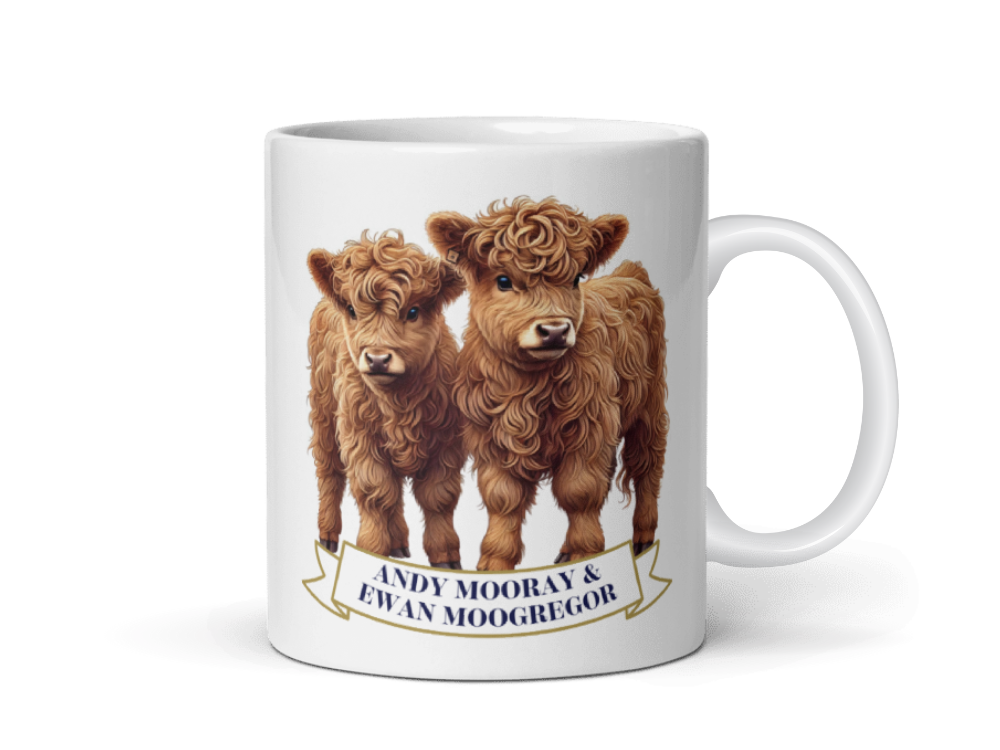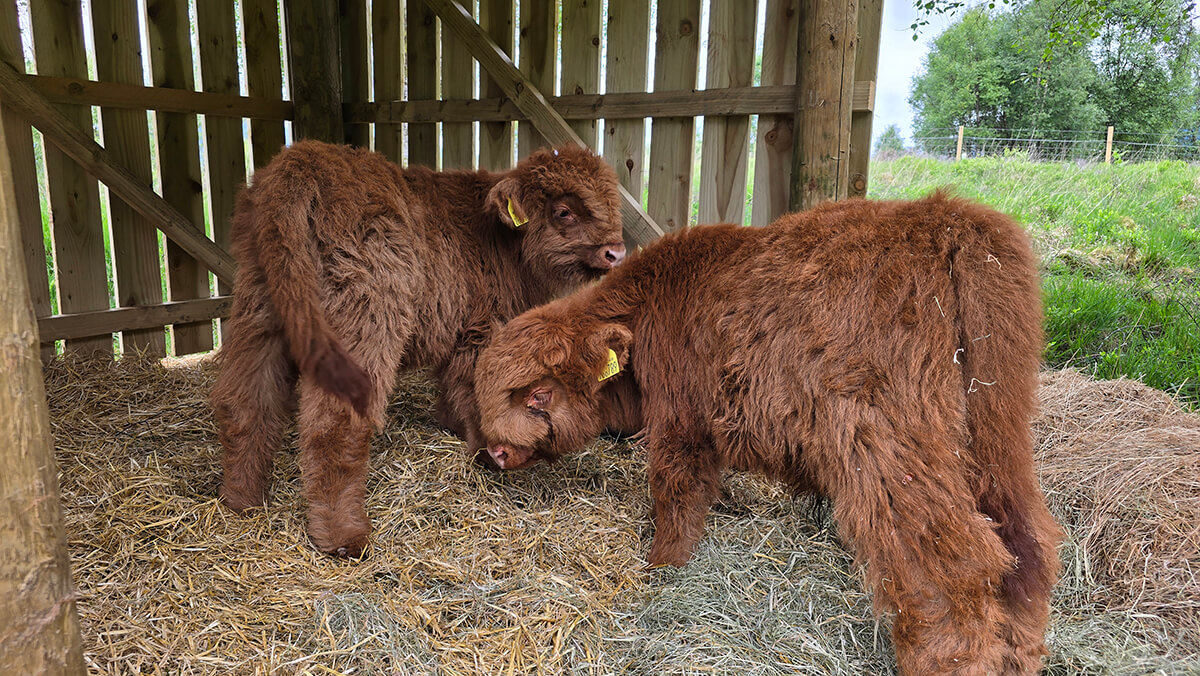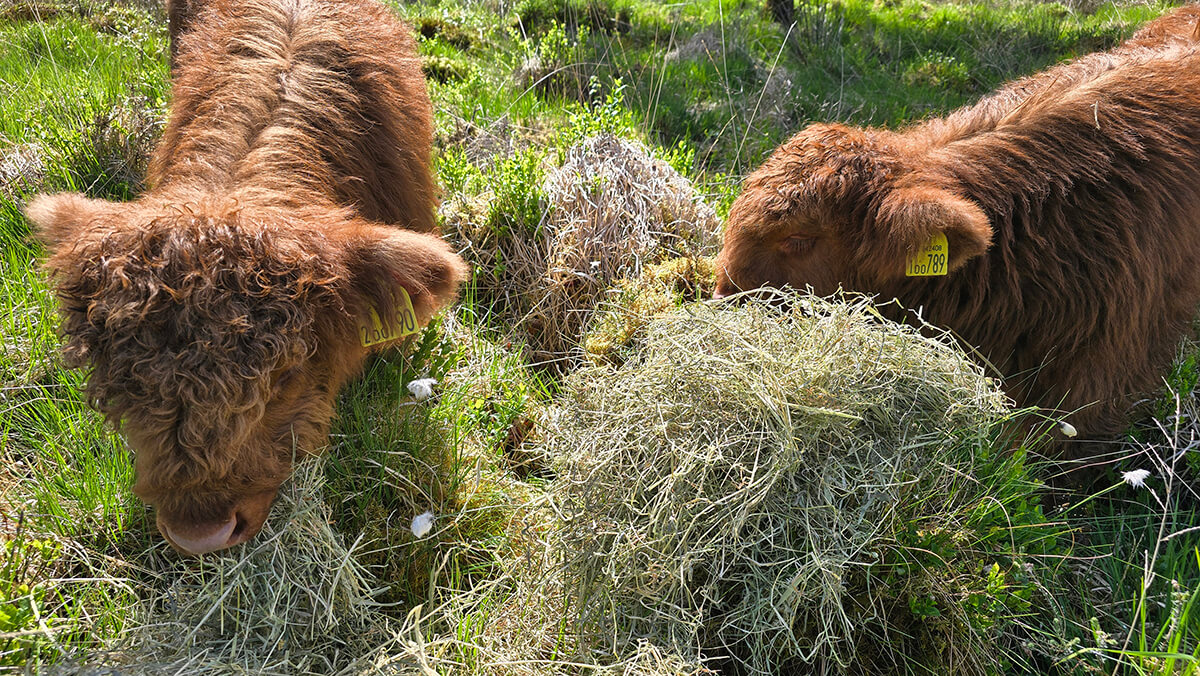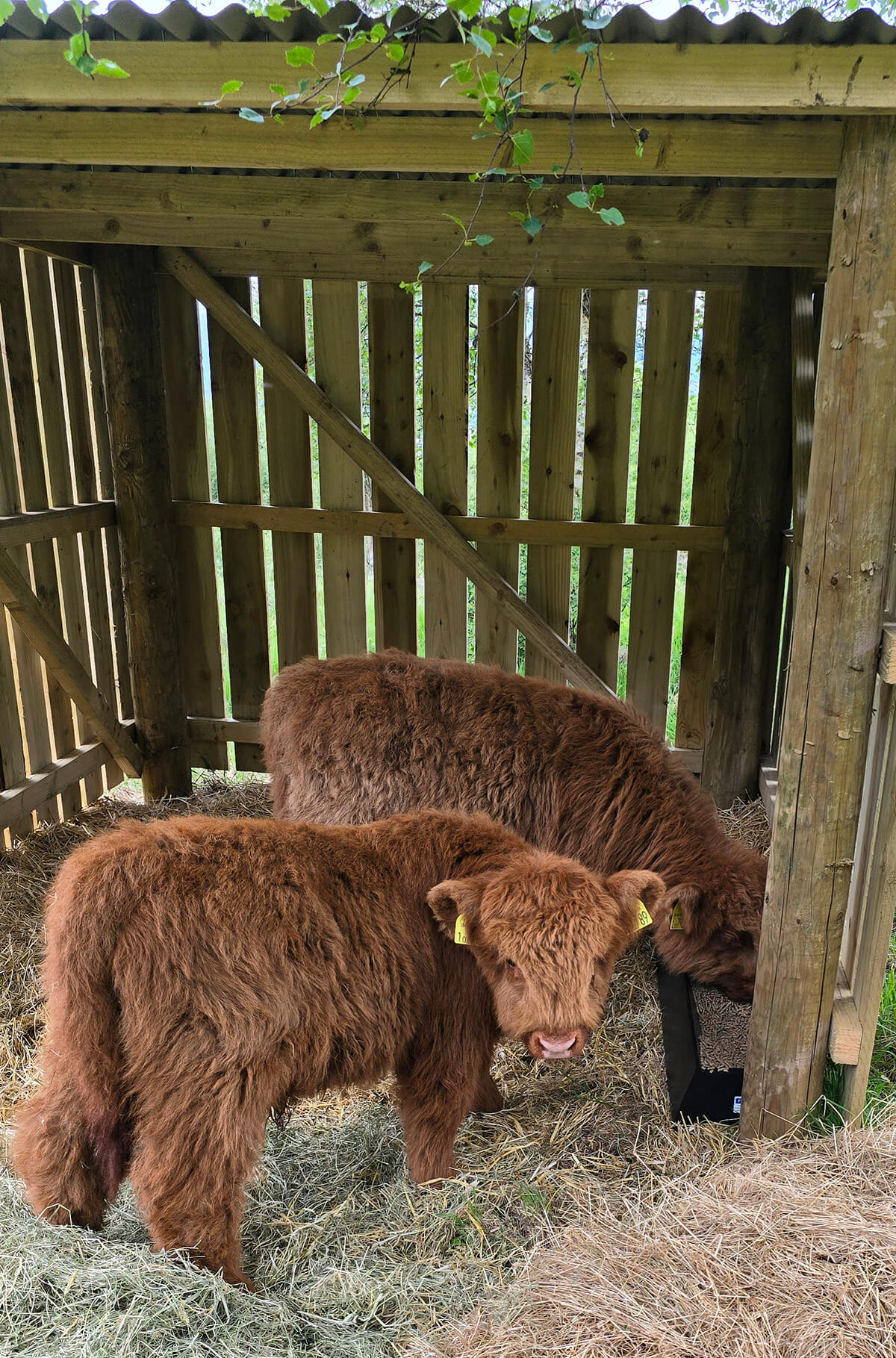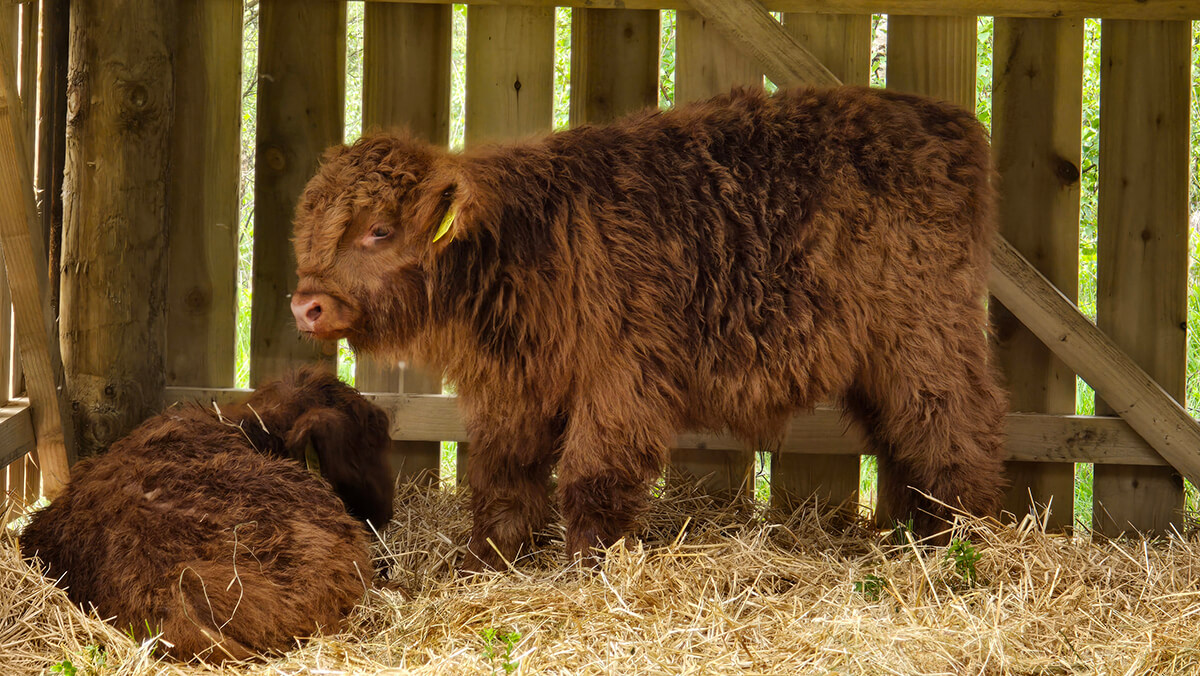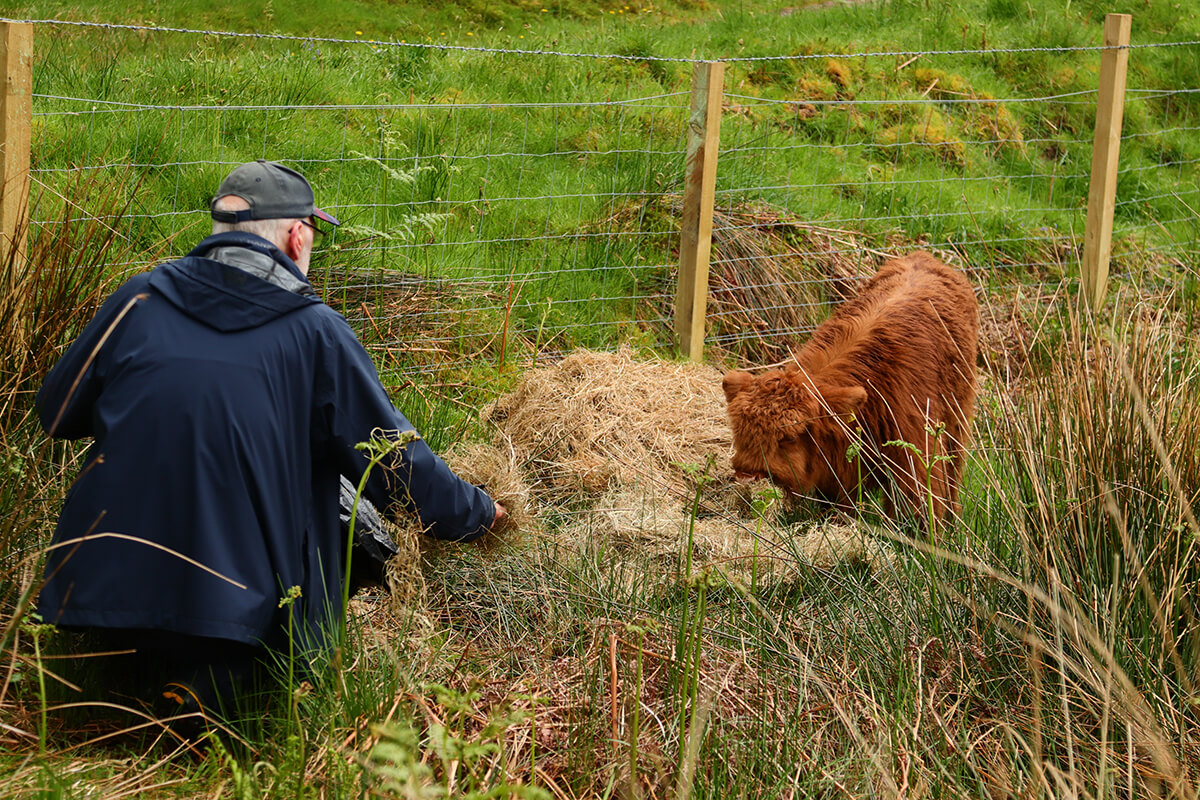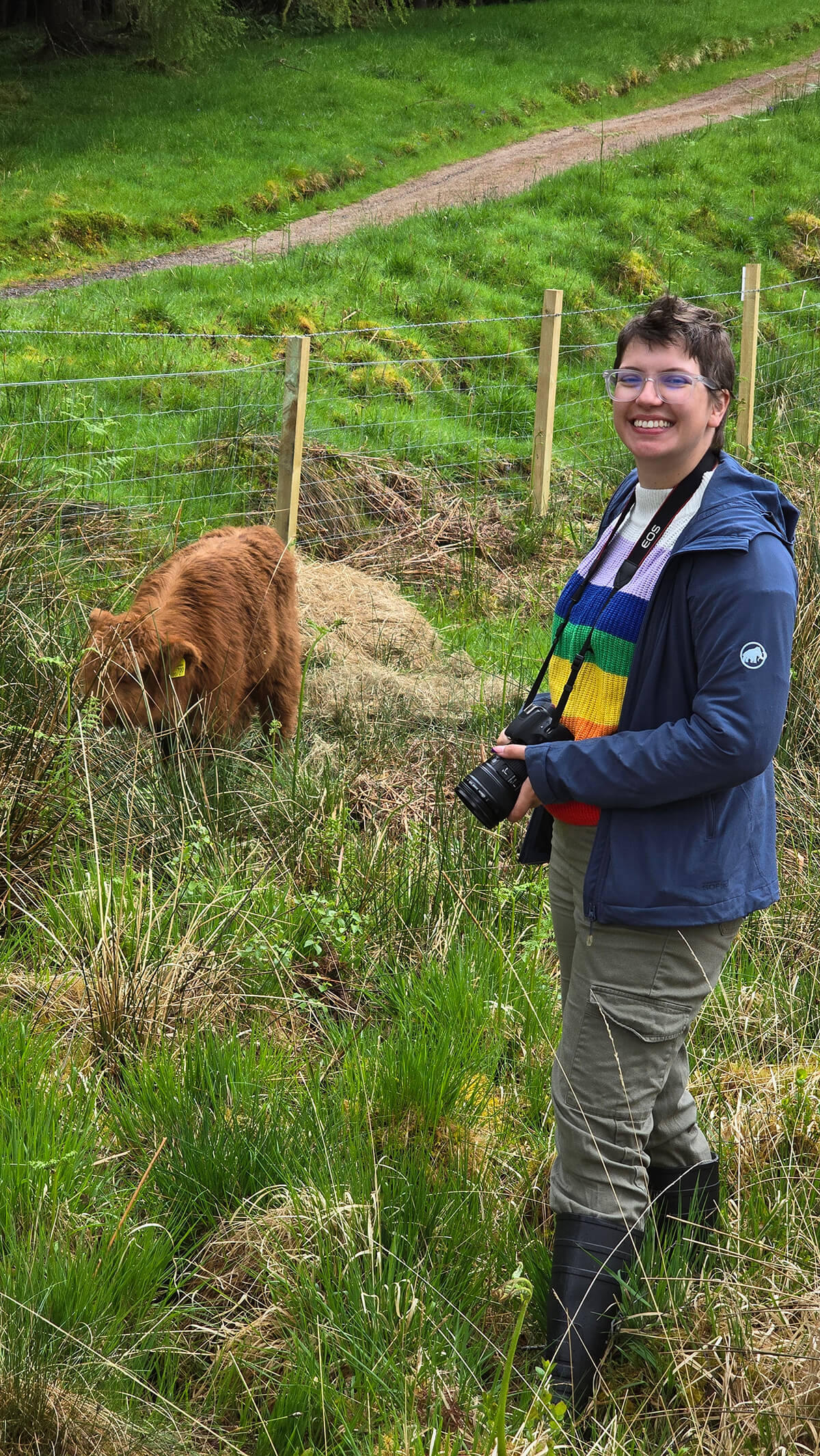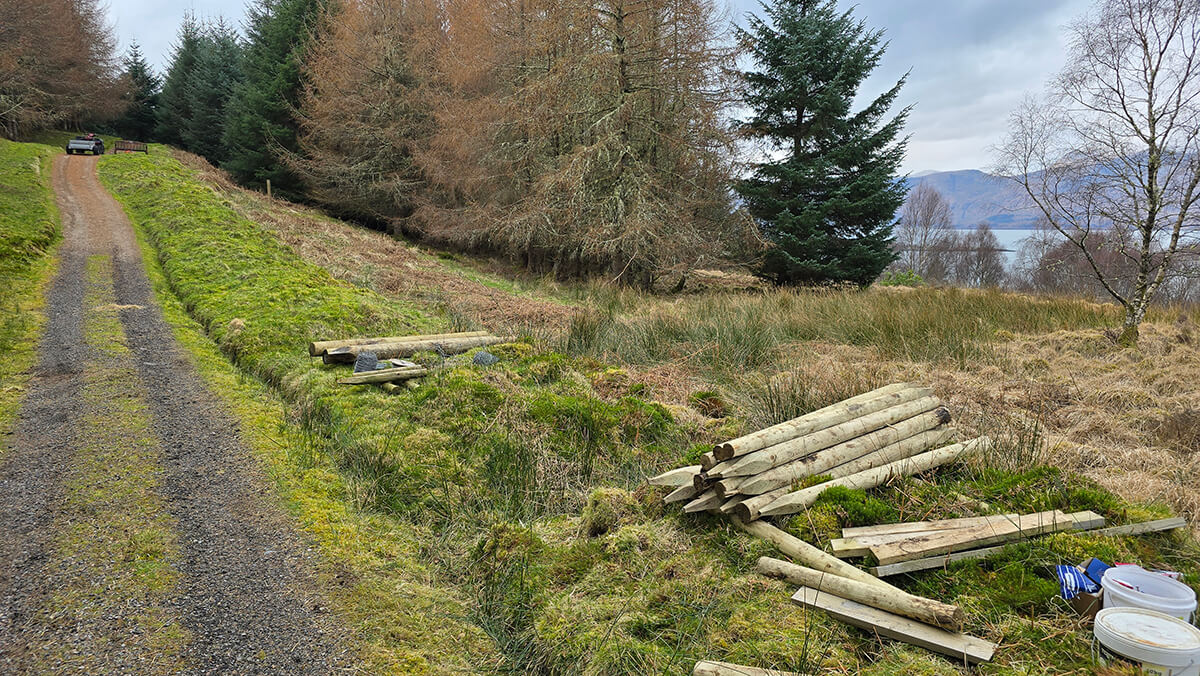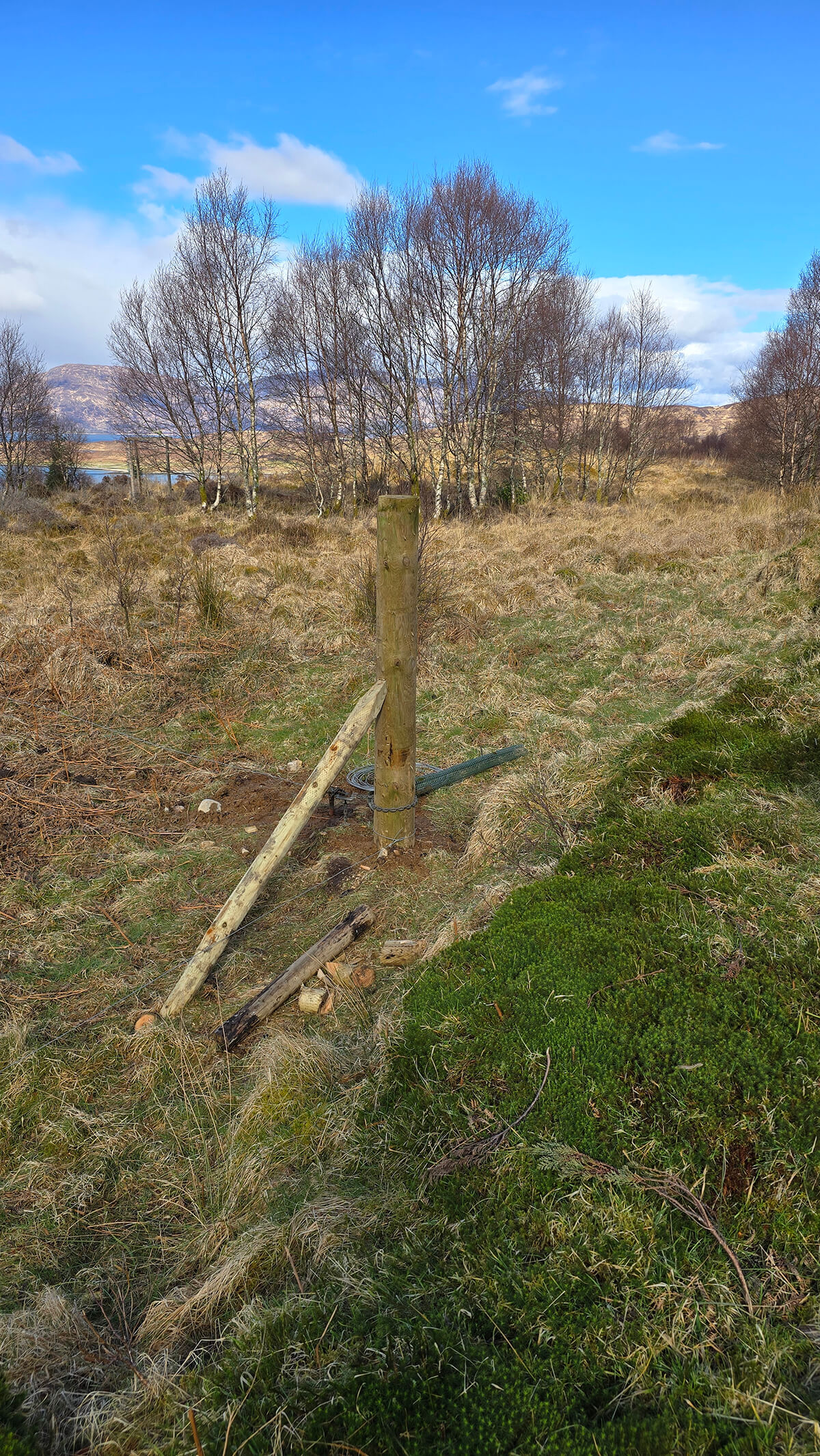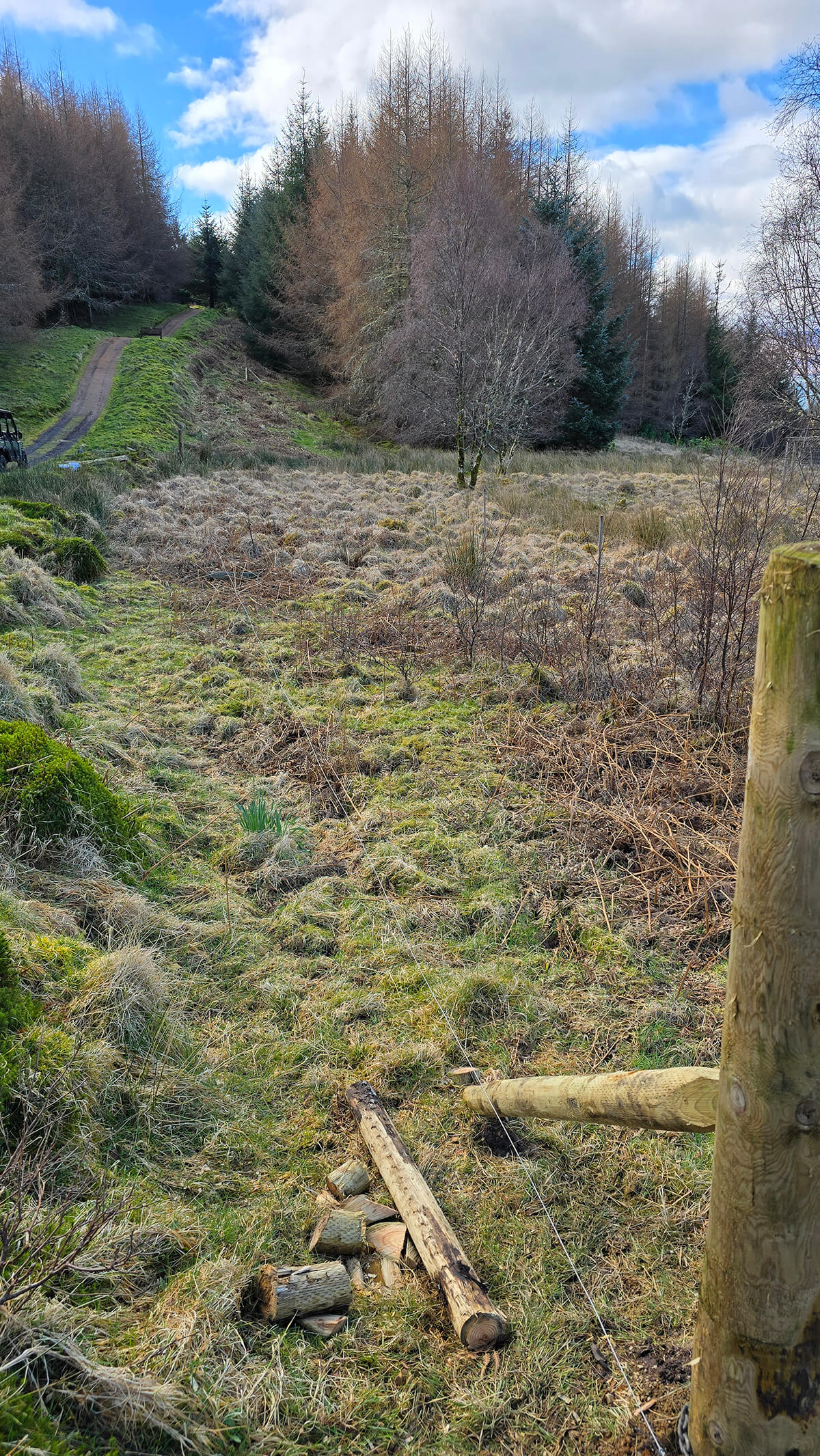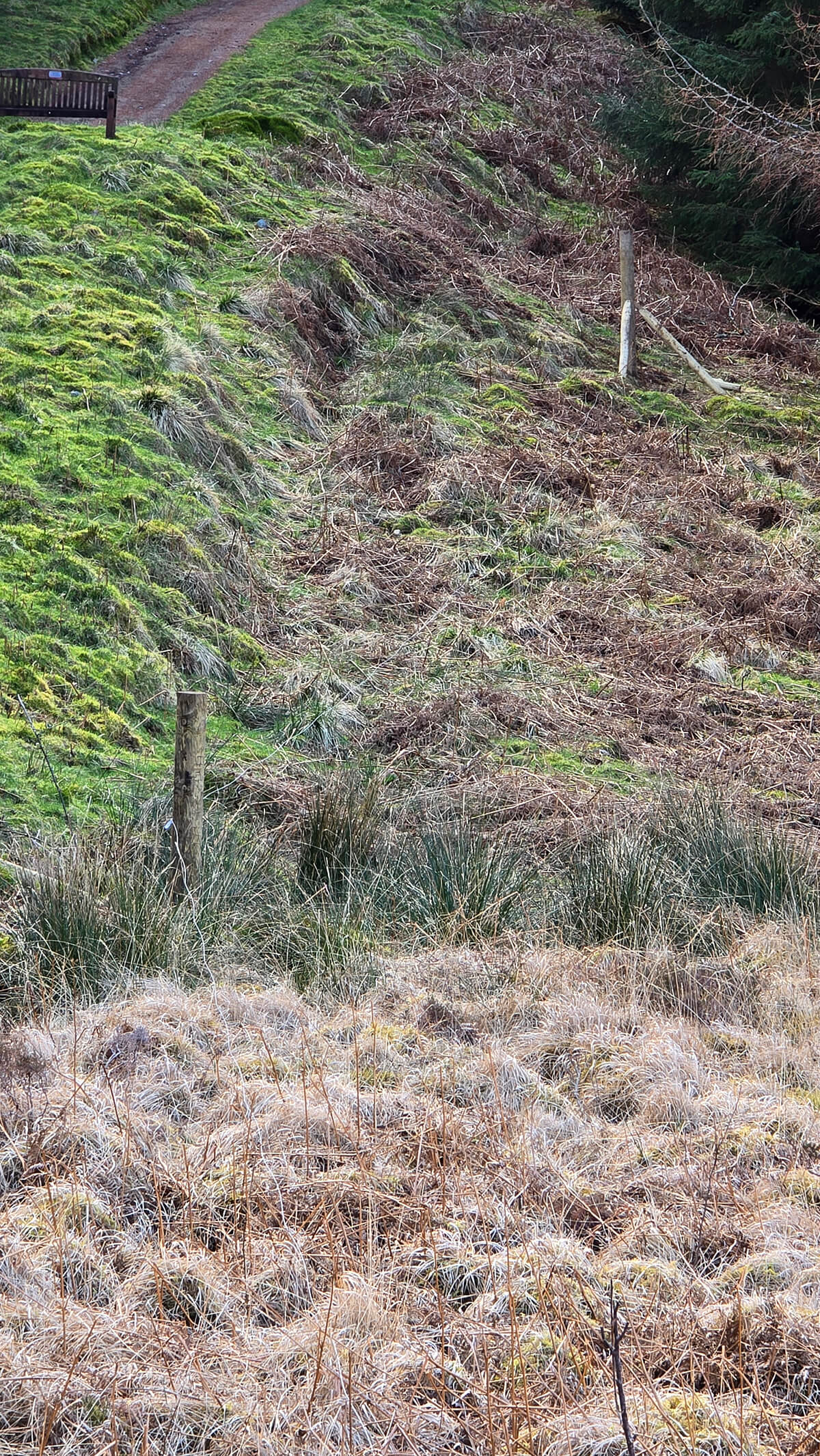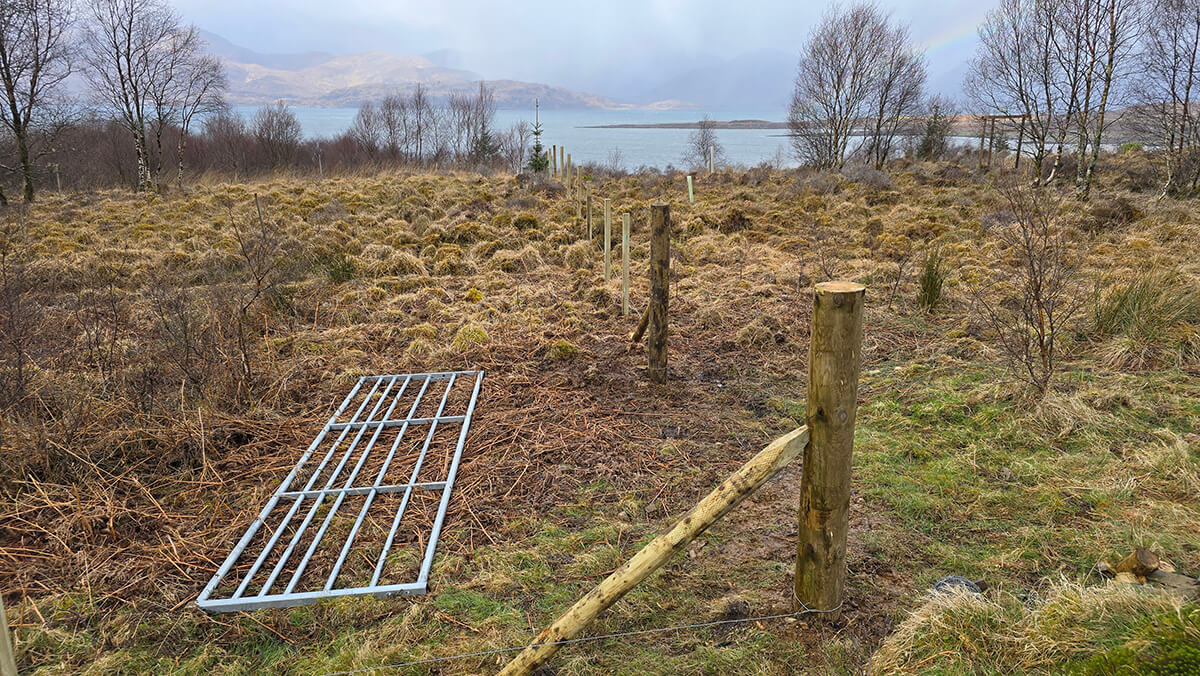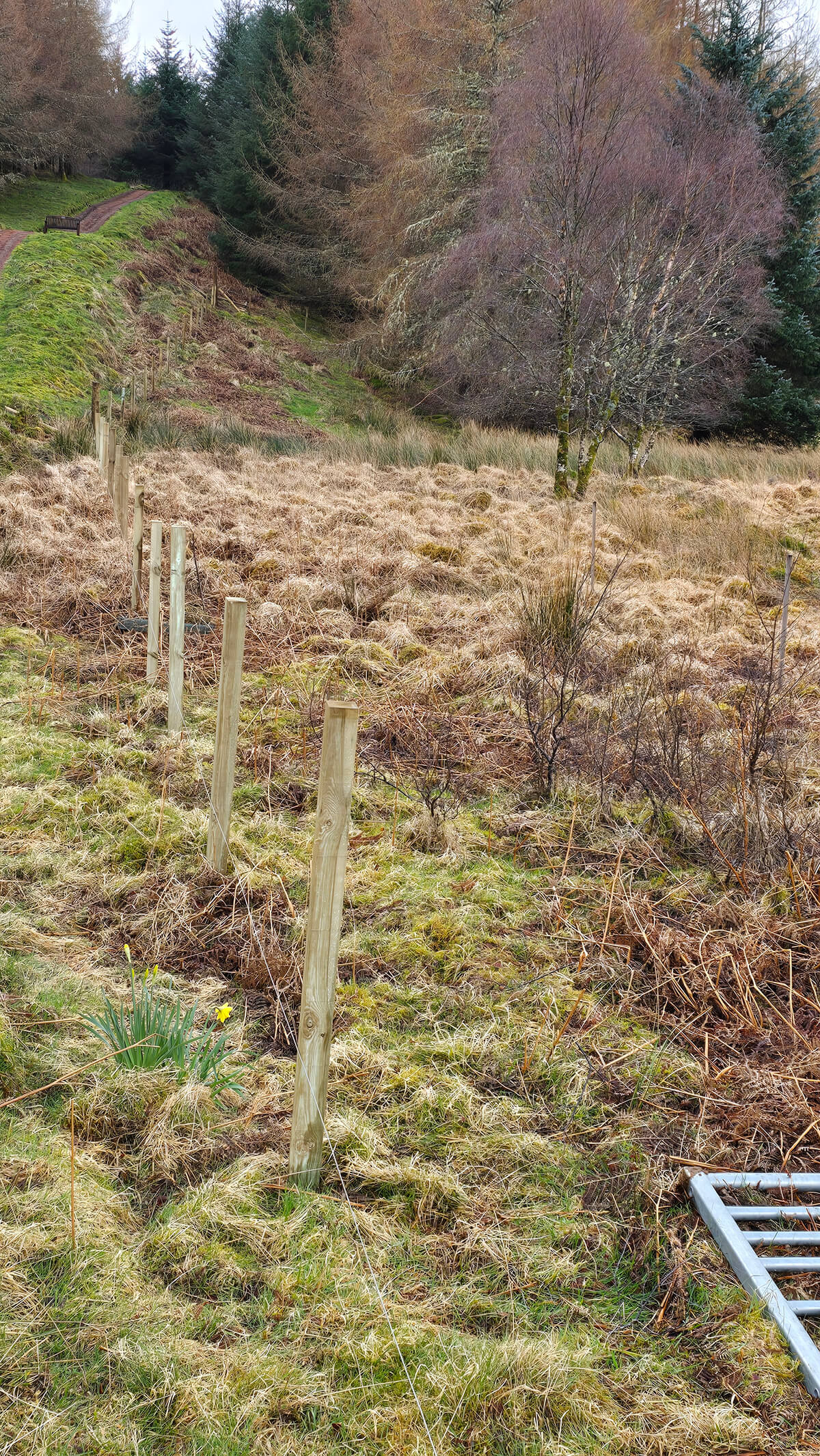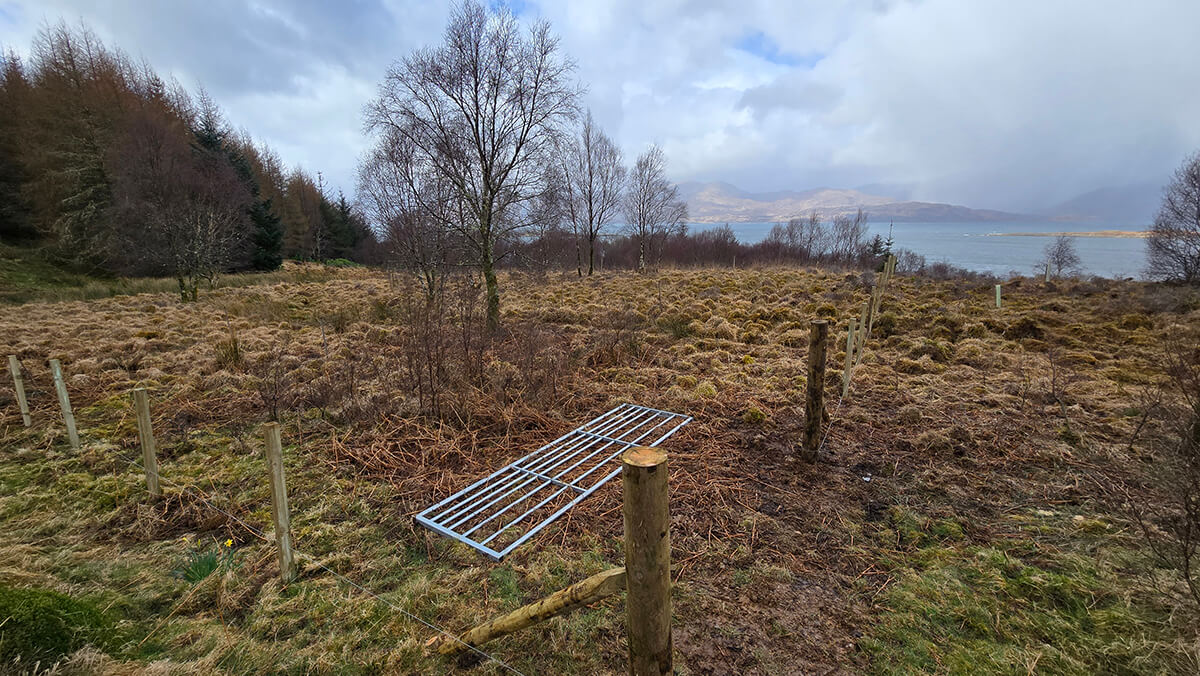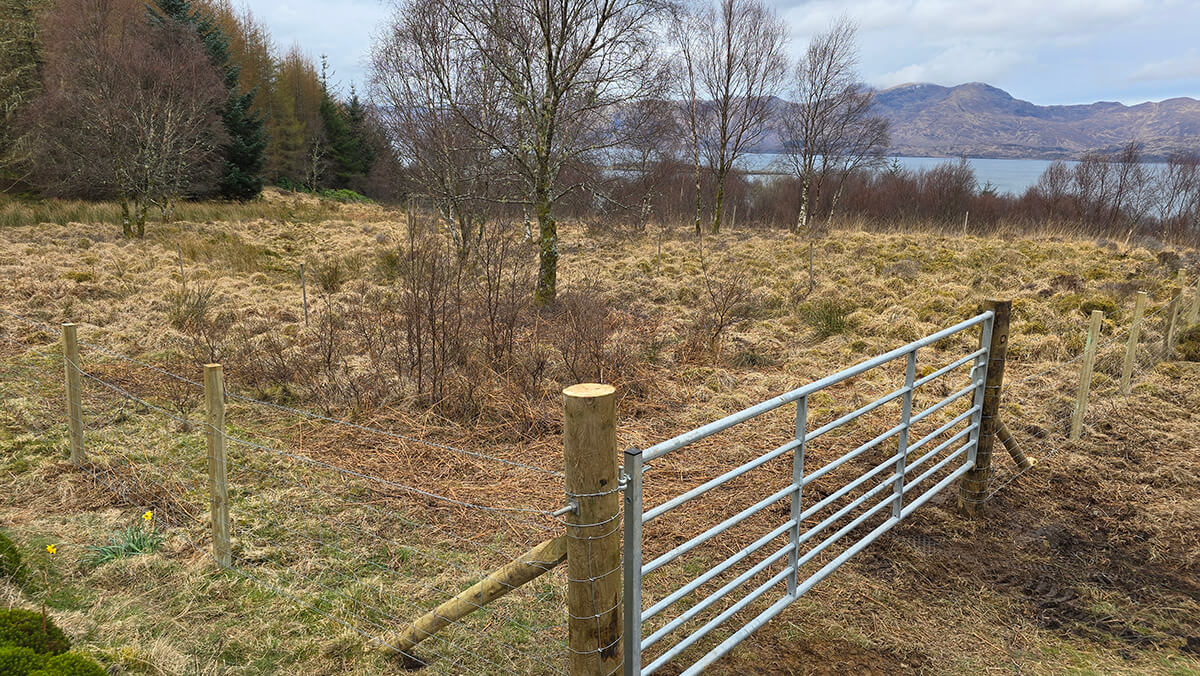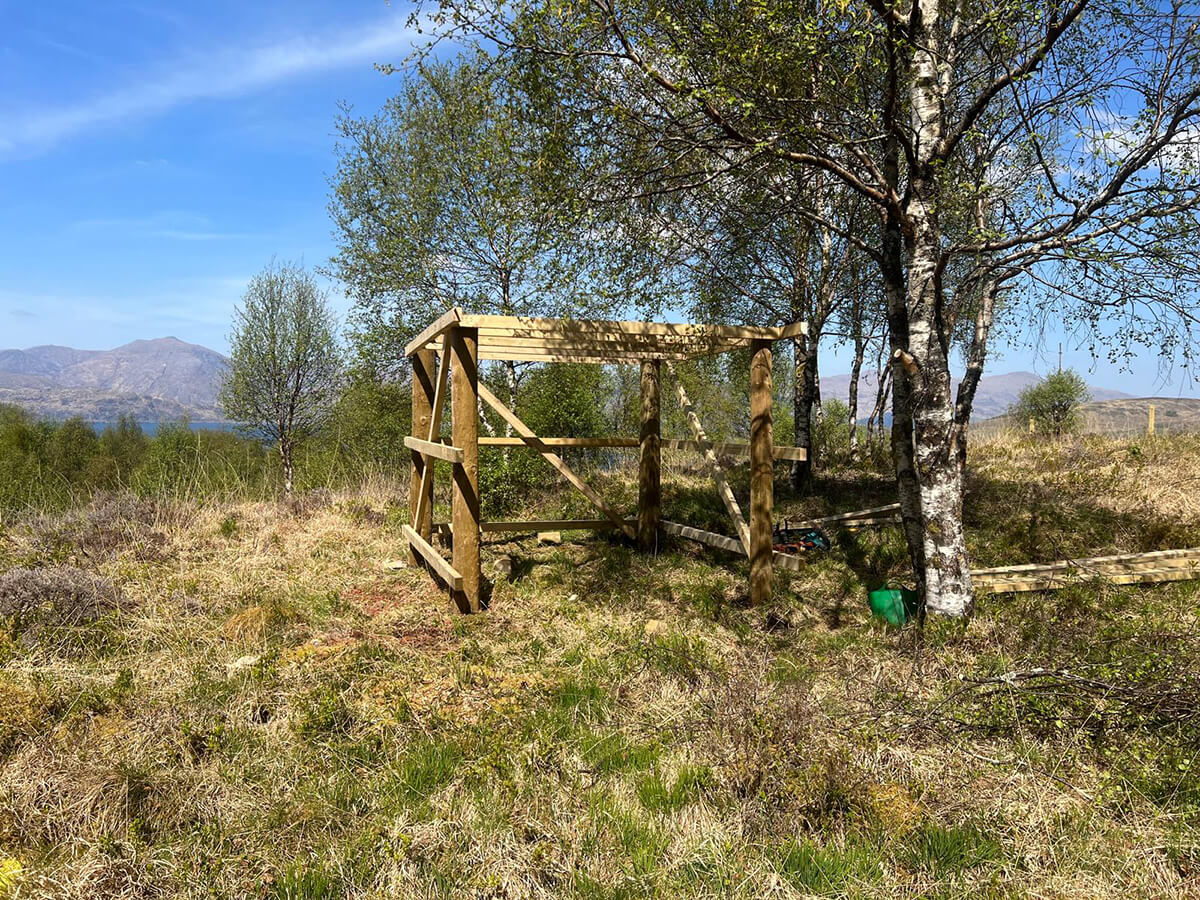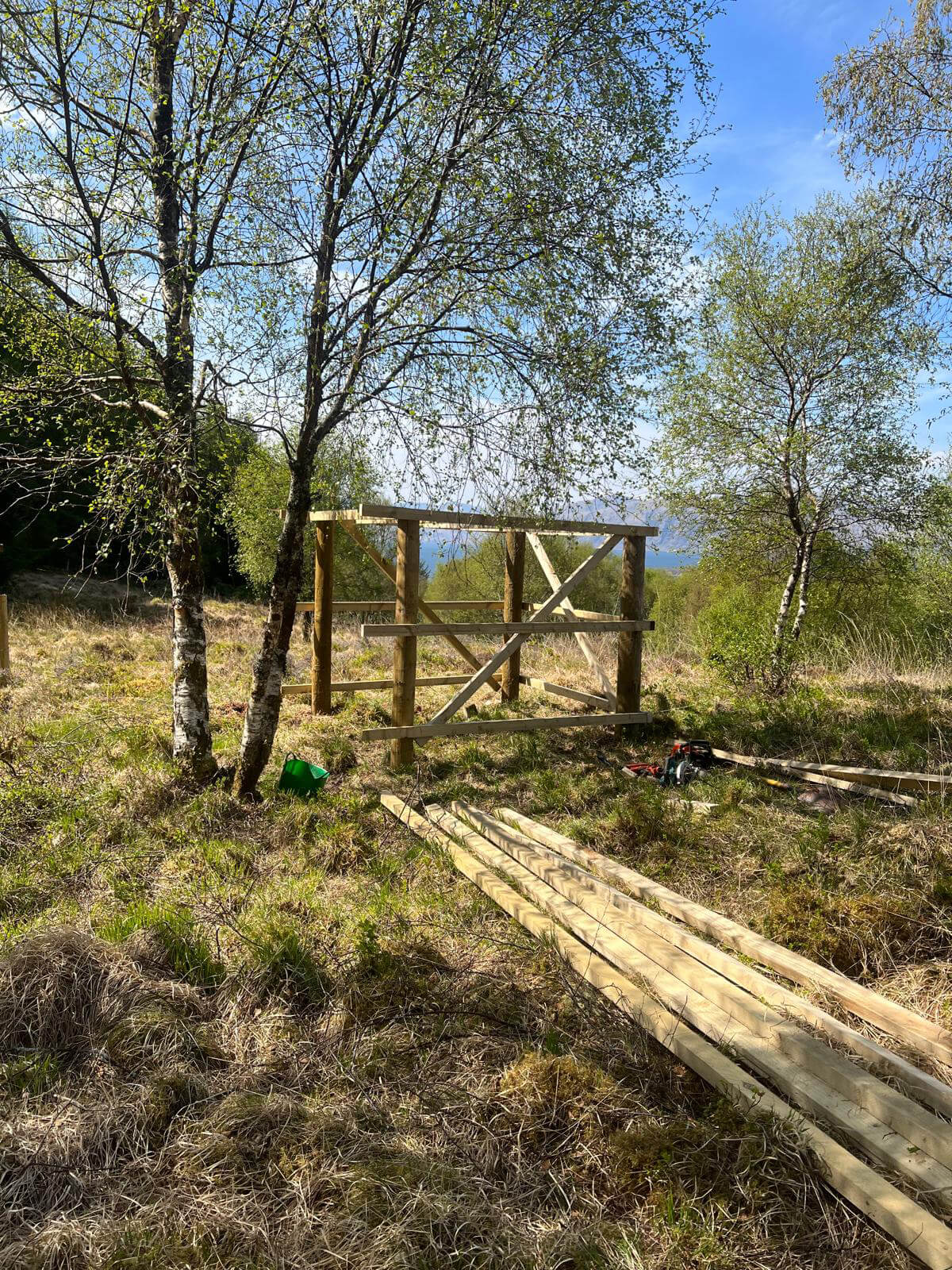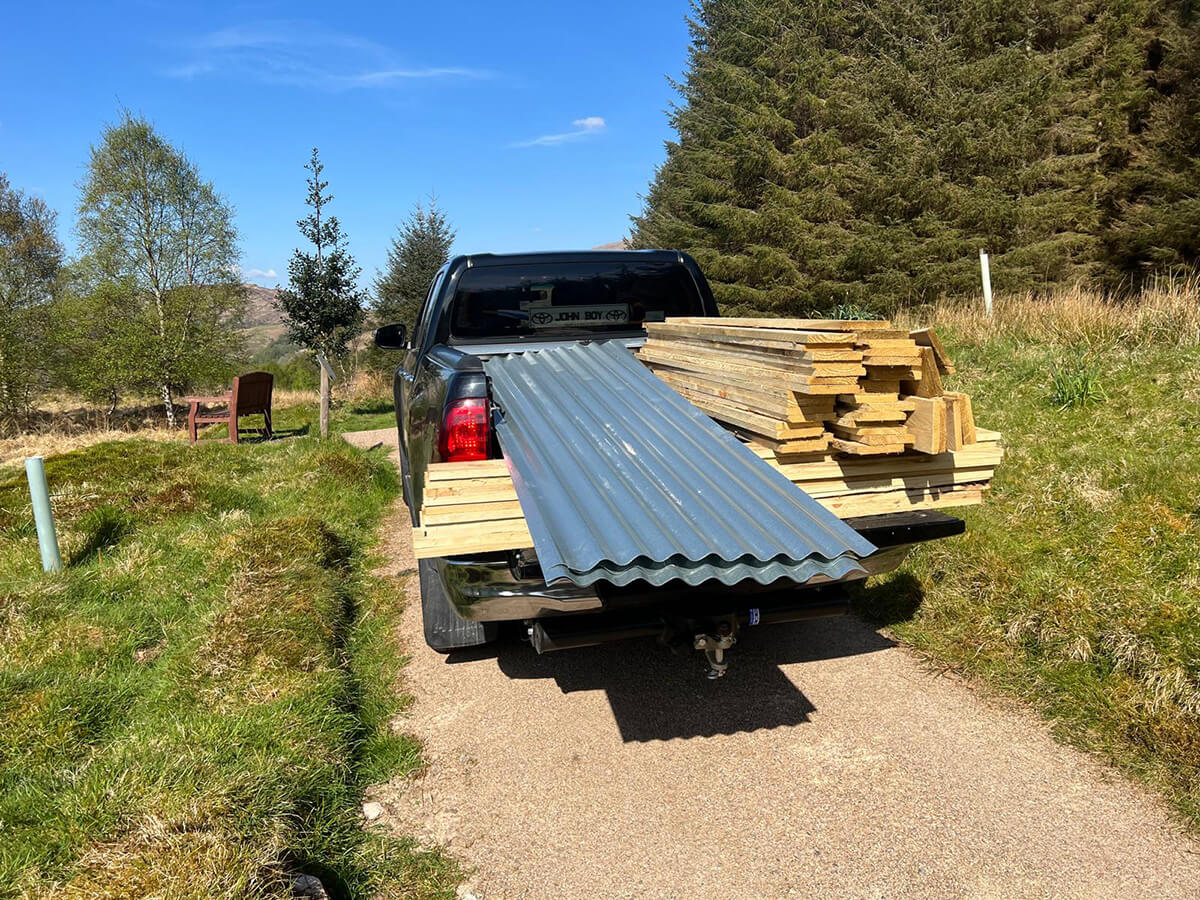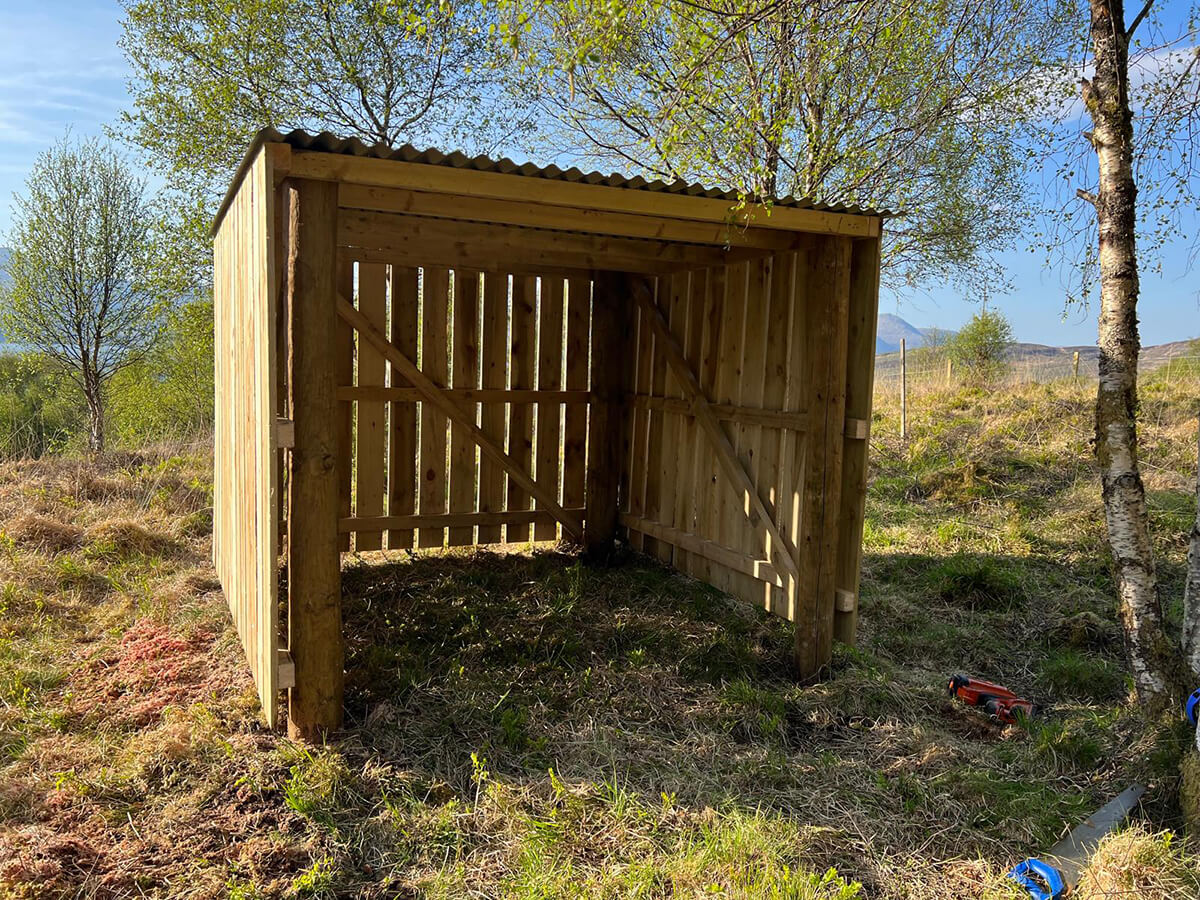Your Highland Cow
The Highlands just wouldn’t be the same without these amazing animals. Our beautiful Highland cattle live at the Highland Titles Nature Reserve in Duror, near Glencoe.

What do the Highland cows do?
They play a crucial role in maintaining the health and biodiversity of the land. These gentle giants help manage the vegetation, ensuring that the ecosystem remains balanced and vibrant. Their grazing habits promote the growth of native plants, which in turn supports a wide variety of wildlife. By adopting a Highland cow, you’re directly contributing to the conservation of this unique environment.

Can I visit my adopted Highland cow?
Yes, of course! You can visit any time, but if you want a Guided Tour then please buy tickets and arrange a visiting time with our nature reserve staff.

How does my donation help?
Your donation directly contributes to the costs of keeping the cows, including….
Feed: We need to ensure our cows have a balanced diet to keep them nice and healthy.
Veterinary Care: Providing regular health check-ups and treatments to prevent and manage any illnesses.
Shelter and Maintenance: Maintaining comfortable and safe shelters for the cows, especially during harsh weather conditions.

The backstory to ‘The Boys’
They were born on 1st March 2024 and they are twins.
It was a very shaky start as Mum was a ‘first-time calver’ and it turned out she did not have enough milk for the boys and just left them. Shannon, who used to work at the Reserve, had to take them in as orphans.

Latest Updates
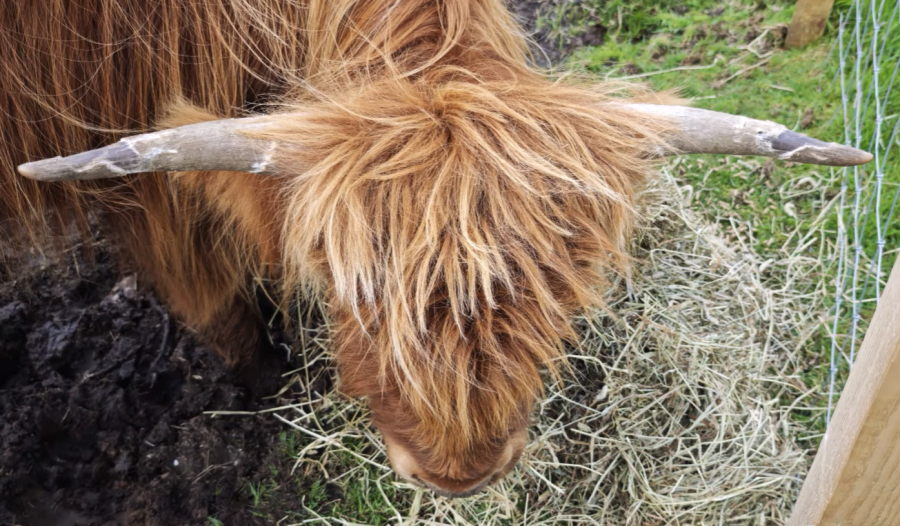
October 2025
“Vets, Bees and Visits!”
What a month it’s been for our Highlanders! From vet visits to buzzing bees, there’s never a dull moment on the reserve. Following last month’s veterinary visit, we’re delighted to share that all three coos received a clean bill of health. The next item on our list for the boys is a special cattle crush, designed for Highlanders and their horns. Future adoptions and donations will help us make this possible.
Work on the new enclosure has paused temporarily after one of our resident bee hives turned a little feisty, giving our contractors a few unwanted stings! The hive is now being safely relocated so work can continue soon.
Meanwhile, our cow tours are proving increasingly popular. To avoid disappointment, please book well in advance by emailing [email protected]
At 18 months old and weighing 350-400Kg, the boys are really showing their personalities: Ewan – still our fluffy softie, often nudged aside by the others; Andy – finding his place among the trio with confidence; Donald – once “the terror,” now a gentle giant (who’s taught Andy to be more assertive!) Thank you to everyone supporting them – it makes all the difference.
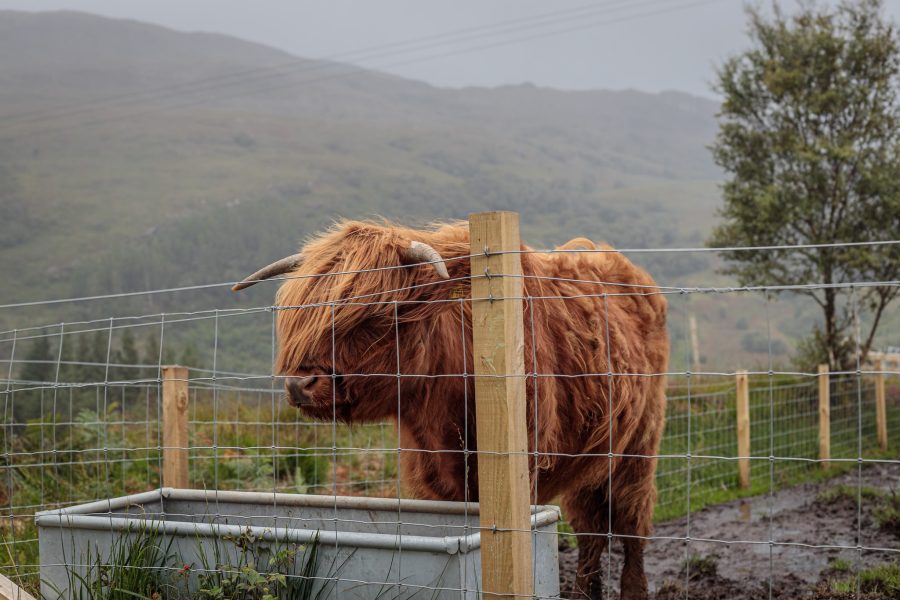
September 2025
“Poops, hooves & Highland shenanigans – life with the cows is never dull!”
It’s been a busy time with the cows! They’ve been with us for over a year now, so it was time for the grand ‘poop collection’. A couple of days spent waiting on the right moment for samples, followed by a vet visit for a quick wee jag all round (jab/injection for the non-Scots). The boys weren’t too impressed with that part! As a result we’re putting together a strong, safe handling area to make things easier for them (and us!) as they grow.
We’ve also begun extending the boys’ enclosure, adding extra drainage, and creating a hard-standing area to keep their hooves happy and healthy. All these projects are made possible thanks to the wonderful support of the Adopt a Highland Cow scheme!

August 2025
“The boys are now well settled in their new, larger enclosure – and even had a visit from a bride and groom!”
Donald’s ‘White House’ (the official name for his shelter) has also been moved from the old enclosure, which never really dried out after last year’s record winter rainfall. That area has now been unfenced and rewilded.
The plan now is to double the size of their new summer pasture, encompassing an area of trees for better winter shelter. We’ll be recycling all the fencing posts and wire fencing from the original spot for the new area.
Since Donald’s arrival, there’s been an extra set of hooves trampling bracken and undergrowth, so more space will definitely benefit the boys – and ultimately the local ecology too!

July 2025
“Lots of green grass (finally) so less need for straw to fill up those tummies!”
Lovely to see Andy & Ewan out on the hill enjoying a spell of lovely dry and warm weather. When it’s particularly hot, we’ve noticed they make their way to the big water trough, even if they’re not thirsty, and just stand with their heads over the cool water… it must help control their body temperature.
Highland cows are known for their long, shaggy coats, which are excellent for insulation in the winter. However, they shed most of this hair in the summer to prevent overheating. When temperatures rise, Highland cows will naturally seek out shade, whether it’s from trees, structures, or even each other.
Like all cattle, Highland cows increase their water intake during hot weather to help regulate their body temperature. Cows tend to be less active in the heat, spending more time resting in the shade.
Photo Gallery
The Boys
Visitors
Enclosure Construction
Shelter Construction
Video Gallery
Fun Facts
- Highland Cows are the oldest cattle breed in the world, appearing in the 6th century in the Outer Hebrides.
- You might have heard the term “the drove road” used in Highland history. These were the tracks through the Highlands where the farmers would take their cattle to market. They could only walk a few miles each day so would stay in different places every night so the animals could graze and stay safe. Ever heard the term, “arriving in droves?” We aren’t completely sure, but it may well have come from this.
- Back in the 18th century, cattle thieving was a huge problem. The clans were terrible for pinching each other’s cattle. Watches were set up, which farmers would pay to get their cows back. Rob Roy MacGregor operated as a watch, drover, cattle dealer and sometimes, a thief himself!


- Highland cows are often identified but their very impressive horn-age. These cows have whopping horns on their heads, which are very powerful, so don’t get too close or you might be skewered. Their horns serve a multitude of purposes though, helping them to rake up the snow and forage for food in the winter. Male horns are thicker than female horns, and they curve forward with a slight upwards rise near the tip of the horn. Female cows have thinner horns that have a more obvious upwards curve.
- Asides from their massive horns, Highland Cows are also known for their long, shaggy coats. These cows have two layers of long shaggy fur, the warm undercoat and the more oily overcoat. This helps to keep them cosy in the winter.
- Apparently, Queen Victoria, when visiting the Highlands is said to have commented that she liked the red coloured cows the best, so to try and please her highness, cows were selectively bred in that colouring. That is part of the reason we see so many ginger cows.
- The original coat colour of Highland cows was black, but the Victorians selectively bred for ginger cows, which led to the burnt orange colour most commonly seen today. White Highland cows, although rarer, are also part of the breed’s natural variation.
- Black is a dominant gene, meaning breeding two black cows usually results in black calves. However, red calves can still appear if both parents carry the recessive red gene.
- Breeding two red cows will always produce red calves, as they do not carry the dominant black gene. White calves, though uncommon, can occur depending on the genetic makeup of the parents.
- The range of coat colours in Highland cattle—including black, ginger, red, brindle, white, and even dun—reflects the rich genetic diversity of this historic breed.


- When a Heilan Cow gives birth, the calf will be able to stand and walk straight away and instantly recognises its mum. Mummy cow will look after and care for her baby for about 6 months, then it’s on its own. But by that point, it’s usually pretty big.
- The most known Highland Cow breed is usually ginger however there are also breeds with yellow, silver, white, red and black coats. The most common breed in the Highlands is the ginger one and they definitely fit well with the backdrop of dramatic Highland scenery.
- Highland Cows eat heaps. In fact, when they’re not sleeping, they’re usually always eating. They spent 8 hours a day munching away and consume almost 70kg of grass a day! That is the equivalent to about 70 pineapples in weight. They need it though, these are big cows.
Our Coo Shop
Don’t forget we also offer a wide range of Highland coo merchandise! The perfect accessory for any cow fan.

